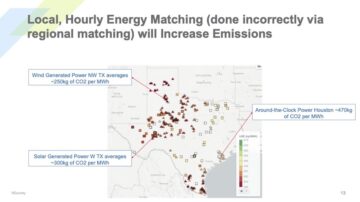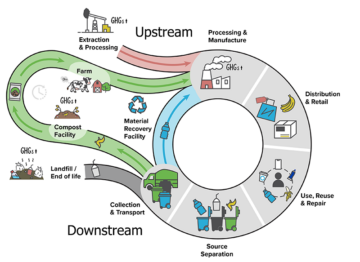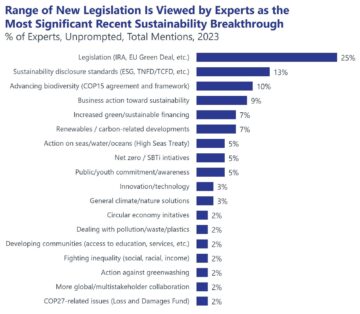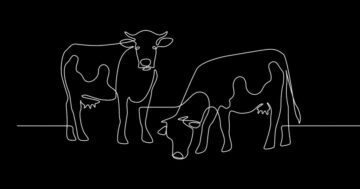
“Over half the world’s GDP is moderately or highly dependent on nature.” This conclusion by the World Economic Forum has become foundational in nature finance discourse, but is it accurate?
The Taskforce on Nature Markets, representing policymakers, the private sector, civil society and Indigenous communities, seeks to establish an ambitious yet practical governance framework for embedding nature into the global financial architecture. It offers a different estimate of the connection: “100 percent of today’s global economy is 100 percent dependent on nature.”
Paul Dickinson, co-founder of the world’s largest environmental disclosure system CDP, agrees with that math: “If you’re on a spaceship, what percentage of the ship’s GDP is dependent on the life support system? It’s not 50 percent, it’s 100 percent.”
Nature has long been undervalued and overexploited, but political and economic interests are increasingly spotlighting nature and biodiversity risks, such as supply chain disruptions caused by ecosystem collapse or commodity price volatility.
Building on that interest, the Taskforce on Nature Markets in August published recommendations to guide the evolution of “nature markets” that value natural resources so their impact on the global economy is more accurately reflected.
Nature markets serve two major purposes:
- Ensuring that nature — expressed as ecosystem services and natural assets — is properly priced; and
- Supporting investments that protect and restore natural processes, ecosystems and species — a state that some in the business world have dubbed “nature positive.”
Current financial mechanisms related to nature can be divided into four segments, according to the Taskforce on Nature Markets.
- Intrinsic markets that enable the trade of resources extracted from the natural world. These include hard (gold, rubber, oil) and soft (corn, wheat, coffee) commodity markets or payments for ecosystem services.
- Asset markets, which trade the rights to use an entire ecosystem asset. Examples are timberland investments made by institutional investors through funds investing in timber and forestry or real estate investment trusts (REITS) that invest in forestland to manufacture and sell forest products.
- Credit markets, such as for carbon removals or avoidance, and now also for biodiversity restoration. The United Kingdom’s habitat banks are an example, one that the European Union is also considering.
- Derivative markets for financial products that directly reflect ecosystem values such as those traded on futures exchanges including the Chicago Board of Trade.
Making nature markets work should not be left up to market forces alone and will require powerful political and policy actions, according to the task force recommendations.
The document conveys an urgent need for governments to step up legal commitments for nature preservation and regeneration that can guide the investment practices of financial institutions domiciled in those countries.
That may be a particular challenge in a time where regulators are increasingly relinquishing their role to corporations: That’s how some have framed the work being done by the Taskforce on Nature-Related Financial Disclosures, which is advancing corporate reporting guidelines akin to those for carbon disclosures.
The Taskforce for Nature Markets is also circumspect about the challenge of measuring projects or investments intended to address nature or biodiversity loss. It points out how financial markets have struggled to address climate risk adequately, despite having established metrics for measuring carbon emissions and a clear set of clean energy technologies to unleash as a solution.
This is not to insinuate that nature markets are set up to fail. The Global Biodiversity Framework — adopted at COP 15 to mobilize $30 billion by 2030 to protect 30 percent of the world’s terrestrial and marine environment — made clear in its targets that both public finance and schemes such as payment for ecosystem services and biodiversity offsets and credits will be crucial for meeting that goal.
The biggest obstacle to overcome is a collective cognitive dissonance that stops policymakers and market participants from making bold and fundamental change, the Taskforce for Nature Markets said in its recommendations. Instead, there is a tendency to embrace incremental change that focuses on responding to immediate rather than larger systemic threats.
- SEO Powered Content & PR Distribution. Get Amplified Today.
- PlatoData.Network Vertical Generative Ai. Empower Yourself. Access Here.
- PlatoAiStream. Web3 Intelligence. Knowledge Amplified. Access Here.
- PlatoESG. Carbon, CleanTech, Energy, Environment, Solar, Waste Management. Access Here.
- PlatoHealth. Biotech and Clinical Trials Intelligence. Access Here.
- Source: https://www.greenbiz.com/article/how-financial-sector-can-make-nature-markets-work
- :has
- :is
- :not
- :where
- $UP
- 100
- 2030
- 30
- 50
- 7
- a
- About
- According
- accurate
- accurately
- actions
- address
- adequately
- adopted
- advancing
- alone
- also
- ambitious
- an
- and
- architecture
- ARE
- article
- AS
- asset
- Assets
- At
- AUGUST
- BE
- become
- been
- being
- Biggest
- Billion
- Bloomberg
- board
- bold
- both
- Bottom
- business
- but
- by
- CAN
- carbon
- carbon emissions
- caused
- cbd
- chain
- challenge
- change
- chicago
- civil
- clean energy
- clear
- Climate
- Co-founder
- Coffee
- cognitive
- Collapse
- Collective
- commitments
- commodity
- Communities
- connection
- considering
- Corporate
- Corporations
- countries
- Credits
- crucial
- dependent
- Despite
- different
- directly
- disclosure
- Disclosures
- disruptions
- divided
- document
- domiciled
- done
- dubbed
- Economic
- Economic Forum
- economy
- ecosystem
- Ecosystems
- embedding
- embrace
- Emissions
- enable
- energy
- Entire
- Environment
- environmental
- ESG
- establish
- established
- estate
- estimate
- Ether (ETH)
- European
- european union
- Event
- evolution
- example
- examples
- Exchanges
- expressed
- FAIL
- finance
- financial
- Financial institutions
- financial products
- Financial sector
- focuses
- For
- Force
- Forces
- forest
- Forum
- four
- Framework
- Free
- from
- FT
- fundamental
- Futures
- GDP
- Global
- Global economy
- global financial
- goal
- Gold
- governance
- Governments
- Green
- Green Finance
- guide
- guidelines
- Half
- Hard
- Have
- having
- highly
- How
- HTTPS
- if
- immediate
- Impact
- in
- include
- Including
- increasingly
- incremental
- instead
- Institutional
- institutional investors
- institutions
- intended
- interest
- interests
- into
- investing
- investment
- Investments
- Investopedia
- Investors
- iShares
- issues
- IT
- ITS
- larger
- largest
- leading
- LEARN
- left
- Legal
- Life
- Line
- Long
- loss
- made
- major
- make
- Making
- Marine
- Market
- market forces
- Markets
- math
- May..
- measuring
- mechanisms
- meeting
- Meets
- Metrics
- more
- Natural
- Nature
- Need
- news
- Newsletter
- node
- now
- obstacle
- of
- Offers
- offsets
- Oil
- on
- ONE
- or
- our
- out
- over
- Overcome
- participants
- particular
- payment
- percent
- percentage
- plato
- Plato Data Intelligence
- PlatoData
- points
- policy
- policymakers
- political
- powerful
- Practical
- practices
- preservation
- price
- private
- private sector
- processes
- Products
- professionals
- projects
- properly
- protect
- public
- published
- purposes
- rather
- real
- real estate
- recommendations
- reflect
- reflected
- regeneration
- Regulators
- related
- removals
- Reporting
- representing
- require
- Resources
- responding
- restoration
- restore
- rights
- Risk
- risks
- Role
- rubber
- s
- Said
- schemes
- sector
- Seeks
- segments
- sell
- serve
- Services
- set
- should
- So
- Society
- Soft
- solution
- some
- State
- Step
- Stops
- strategies
- such
- supply
- supply chain
- support
- system
- systemic
- Task
- task force
- taskforce
- Technologies
- terrestrial
- than
- that
- The
- the world
- their
- There.
- These
- this
- those
- threats
- Through
- time
- to
- today’s
- trade
- Trusts
- two
- union
- United
- unleash
- urgent
- use
- value
- Values
- Volatility
- want
- weekly
- What
- which
- will
- with
- Work
- world
- World Economic Forum
- world’s
- yet
- zephyrnet











